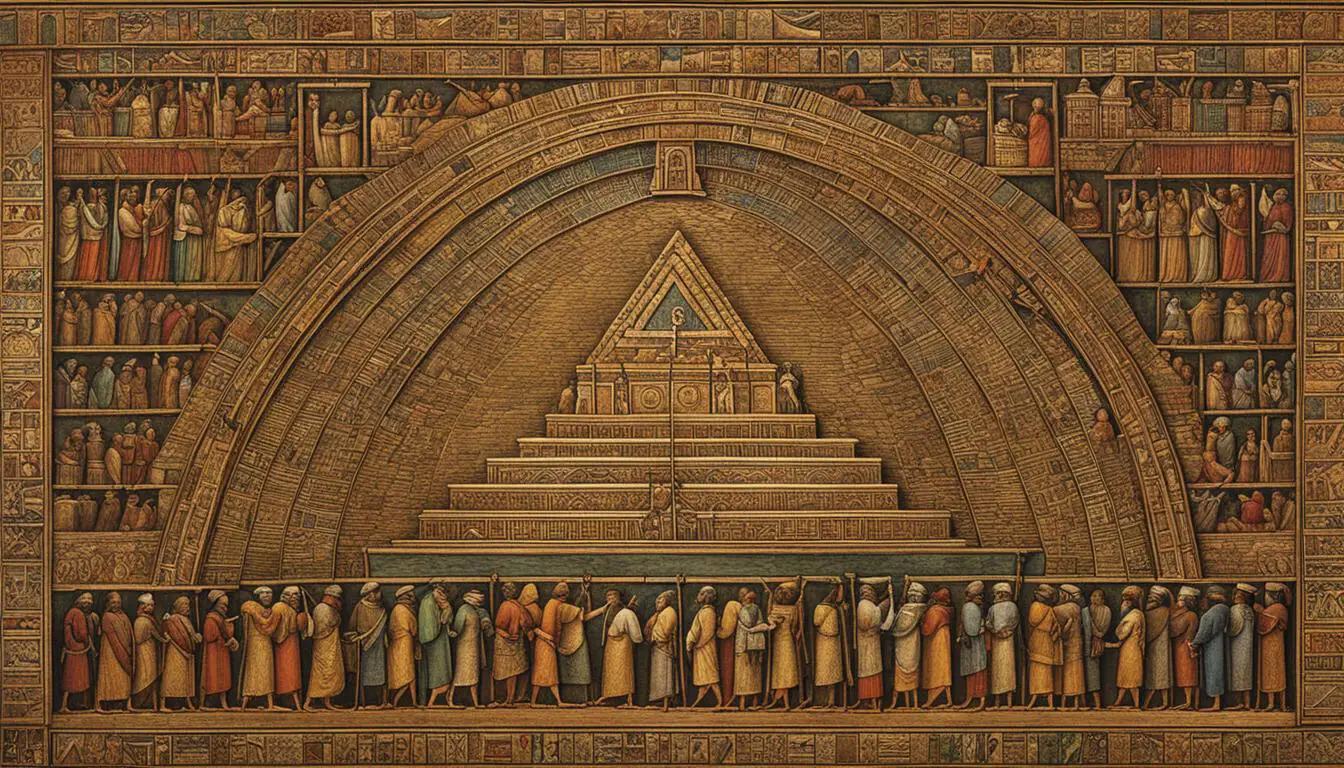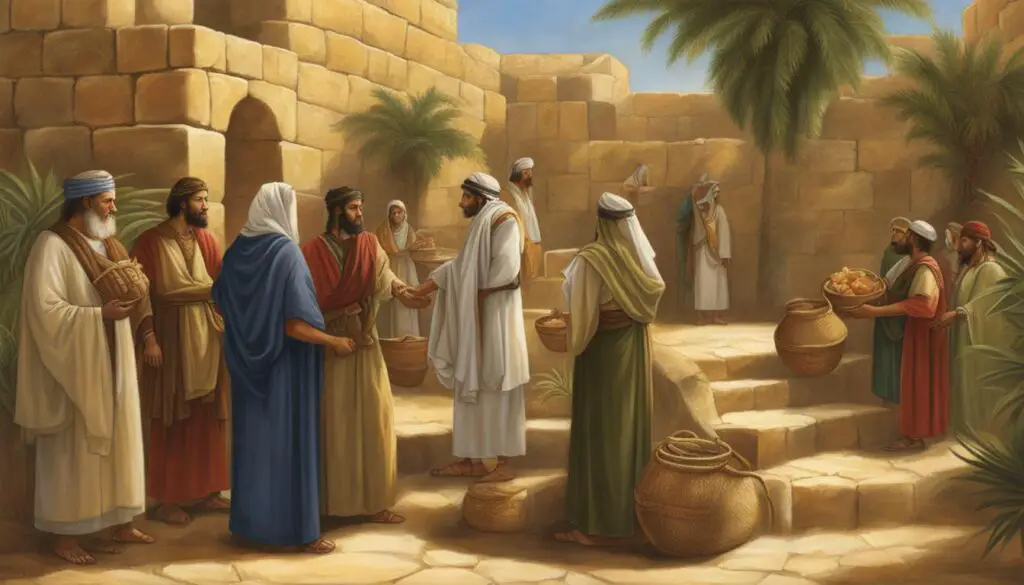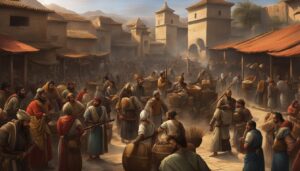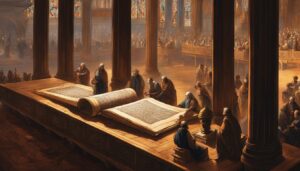
Ancient Israelite society was primarily organized into social structures that were rooted in tribal and family units. This information is primarily derived from the Bible, as archaeological excavations have not yielded significant additional material on this subject. The social structure of ancient Israel was patriarchal, with tribes composed of variously sized units that were connected by blood ties and claimed descent from a common patriarch.
Within these tribes, clans and households formed the smallest social units, consisting of sons, wives, and offspring. The elder leaders of these units held political and judicial authority and were elected based on lineage, experience, wisdom, and the support of their respective units. The tribal framework also included a supra-tribal organization, although the exact nature and extent of this organization are still debated by scholars. Over time, the social structure of ancient Israel underwent changes due to urbanization, economic shifts, and the influence of external factors.
Key Takeaways:
- The social structure of ancient Israel was primarily organized into tribal and family units.
- Tribes in ancient Israel were composed of variously sized units connected by blood ties and claimed descent from a common patriarch.
- Clans and households formed the smallest social units within tribes, with elder leaders holding political and judicial authority.
- Urbanization, economic shifts, and external factors influenced changes in the social structure over time.
- Ancient Israelite society was patriarchal and had a supra-tribal organization, the nature of which is still debated.
Social Hierarchy in Ancient Israel
Within the social structure of ancient Israel, there existed a clear social hierarchy. This hierarchical system was composed of different social classes that held varying levels of wealth, power, and influence within the society. Understanding the social hierarchy is crucial to gaining insight into the dynamics of biblical society in ancient Israel.
Israelite Social Classes
The social classes in ancient Israel can be categorized into three main groups: the landowning class, the merchant class, and the artisan class. The landowning class consisted of individuals who owned and cultivated land, which was a valuable and essential asset in an agrarian society. These landowners held significant wealth, power, and influence, as their land provided them with the means to support themselves and their families.
The merchant class, on the other hand, engaged in trade and commerce. They played a crucial role in the economic development of ancient Israel, facilitating the exchange of goods and services between different regions. The merchant class possessed considerable wealth, as their businesses allowed them to accumulate profits and engage in transactions on a broader scale.
The artisan class comprised skilled craftsmen who specialized in various trades and crafts. These individuals contributed to the society by creating essential goods, such as pottery, textiles, and metalwork. Although they might not have accumulated significant wealth like the landowners or merchants, artisans held an important social position due to their specialized skills and craftsmanship.
Ancient Israelite Social Systems
The social classes in ancient Israel were not the only factors that determined an individual’s social status. Other elements, such as occupation, economic resources, and social roles, also played a role in shaping the social hierarchy. Additionally, it is important to note that there were marginal elements in ancient Israelite society, such as slaves, who held a lower social status.
“The social hierarchy in ancient Israel reflected the economic and occupational diversity of the society. It was a complex web of interdependent roles and relationships that defined the social dynamics of biblical society.”
Understanding the social hierarchy in ancient Israel provides valuable insights into the distribution of power, wealth, and influence within the society. It sheds light on the various social classes and their roles, as well as the factors that influenced an individual’s social status. By examining the social structures in ancient Israel, we can gain a deeper understanding of the complexities and nuances of biblical society during that time.

| Class | Description |
|---|---|
| Landowning Class | The landowning class consisted of individuals who owned and cultivated land, holding significant wealth, power, and influence. |
| Merchant Class | The merchant class engaged in trade and commerce, accumulating wealth through their business activities. |
| Artisan Class | The artisan class comprised skilled craftsmen who specialized in various trades and crafts, contributing to society through their craftsmanship. |
Evolution of Social Structures in Ancient Israel
The social structures of ancient Israel underwent significant transformation over time, shaped by social, economic, and political factors. The transition from a primarily tribal society to a more centralized monarchical system brought about profound changes in the social fabric of the ancient Hebrews.
Urbanization played a pivotal role in reshaping the social structures. As communities became more settled, new economic practices and social distinctions emerged. The rise of private property and increased proprietary awareness altered the dynamics within clans and households.
The economic base of ancient Israel also underwent a significant shift. From a society centered around sheep and cattle raising, there was a transition to crop cultivation and the development of crafts necessary for settled life. These changes not only influenced the social structure but also led to the creation of a marginal society made up of nonproductive individuals without property.
Geographic and geopolitical conditions further impacted the social structure, varying among the different tribes of ancient Israel. Despite these changes, the tribal structure endured to some extent, adapting to new circumstances and needs, while maintaining its ancient Hebrew social organization.
FAQ
What were the social structures of ancient Israel based on?
The social structures of ancient Israel were primarily organized into tribal and family units, with tribes composed of clans and households.
How were leaders chosen within the social units?
The elder leaders of the tribes, clans, and households were elected based on lineage, experience, wisdom, and the support of their respective units.
Were there different social classes in ancient Israel?
Yes, there were different social classes, including the landowning class, merchant class, artisan class, and marginal elements such as slaves.
What factors influenced the evolution of the social structures?
The transition from tribal to a more centralized system, urbanization, economic shifts, and external influences all played a role in shaping the evolution of social structures in ancient Israel.








